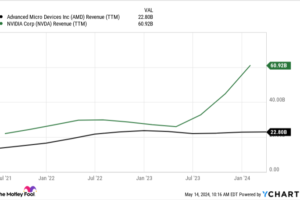<p class="canvas-atom canvas-text Mb(1.0em) Mb(0)–sm Mt(0.8em)–sm" type="text" content="This is the third article in my series about The Walt Disney Company (DIS). In the first article, I looked at the Parks, Experiences and Products business, as well as the Studio Entertainment business. I concluded that these segments are collectively worth somewhere in the range of $90 billion to $170 billion (before accounting for minority interests). In the second article, I provided an overview on the Media Networks segment, as well as the recent results in the Direct to Consumer (DTC) and International segment. I did not come to a definitive conclusion.” data-reactid=”12″>This is the third article in my series about The Walt Disney Company (DIS). In the first article, I looked at the Parks, Experiences and Products business, as well as the Studio Entertainment business. I concluded that these segments are collectively worth somewhere in the range of $90 billion to $170 billion (before accounting for minority interests). In the second article, I provided an overview on the Media Networks segment, as well as the recent results in the Direct to Consumer (DTC) and International segment. I did not come to a definitive conclusion.
Disney is competing in two distinct markets within Media Networks and DTC & International. One is focused primarily on the entertainment programming, and the other is focused primarily on non-entertainment programming (live news and live sports).
This article will focus on the entertainment programming side. In 2016, former Disney CEO Bob Iger declared that direct to consumer was “our number one priority as a company.” To date, direct to consumer video has been primarily focused on entertainment content (ESPN+ and DAZN are the notable exceptions). Today, the primary assets Disney has developed for their DTC entertainment strategy are Disney+ and Hulu’s subscription video on demand (SVOD) service..
The Disney+ service was launched in the United States on Nov. 12, 2019 at a price of $6.99 a month. It is also available in a bundle with ESPN+ and Hulu, which costs $12.99 a month. The results to date have been highly encouraging. The service added 10 million subscribers on the first day, more than 25 million subscribers in six weeks and recently crossed 50 million subscribers. After five months, with the service available in less than 20 countries – and many of those for only a few weeks – Disney+ has built a subscriber base that is roughly 30% of the size of the global streaming business that Netflix (NASDAQ:NFLX) has built over 13 years.
As shown in Disney’s first quarter press release, Disney+ had an average revenue per user (ARPU) of $5.56 per month. To put that number in perspective, Netflix (NFLX) had a global ARPU of $10.87 in the first quarter. On a base of more than 50 million subscribers, that suggests Disney+ has already built a business with run rate revenues of roughly $3.4 billion a year.
As noted at the April 2019 investor event that laid out Disney’s DTC strategy, the service is expected to have original content investments of roughly $1 billion in fiscal 2020, climbing to roughly $2.5 billion in fiscal 2024 with content amortization expense around $2 billion. In addition, the service is expected to have internally licensed content costs (what they pay for content developed by Studio Entertainment and Media Networks) of roughly $2.5 billion in fiscal 2024.
In summary, Disney+ has built a revenue base in five months that should cover roughly 70% of the expected content costs required to support the service in fiscal 2024. Assuming those expenses come in-line with guidance, the below chart shows what would be left after accounting for content costs at different subscriber levels.

<p class="canvas-atom canvas-text Mb(1.0em) Mb(0)–sm Mt(0.8em)–sm" type="text" content="In the top output, I assume ARPU is unchanged from current levels ($5.56 per month). In the middle output, I assume it rises 20% (cumulatively) by 2024 to $6.67 per month. I think ARPU growth could be driven by price increases in markets like the U.S. over the next few years, along with the expiration of early "sweetheart" deals (two and three year contracts, Verizon subs, etc.), but those tailwinds could also be offset by mix shift toward lower ARPU regions like APAC and Latin America. Finally, in the bottom output, I assume even more aggressive ARPU growth – up 50% by 2024 to $8.34 per sub per month.” data-reactid=”32″>In the top output, I assume ARPU is unchanged from current levels ($5.56 per month). In the middle output, I assume it rises 20% (cumulatively) by 2024 to $6.67 per month. I think ARPU growth could be driven by price increases in markets like the U.S. over the next few years, along with the expiration of early “sweetheart” deals (two and three year contracts, Verizon subs, etc.), but those tailwinds could also be offset by mix shift toward lower ARPU regions like APAC and Latin America. Finally, in the bottom output, I assume even more aggressive ARPU growth – up 50% by 2024 to $8.34 per sub per month.
Of course, content isn’t the only expense for a SVOD service. There’s also customer support, technology, marketing, etc. To get our arms around that, let’s look at the historic results for Netflix. Here’s the company’s operating expenses on a per sub basis over the past six years.

Note that Netflix averaged 48 million subscribers in 2014, comparable to where Disney+ is at today. Over the entire period, operating expenses per subscriber averaged roughly $30 per year. I see no reason why I cannot assume a similar number for Disney. Some will argue that Disney could potentially get by with fewer direct marketing dollars, an argument which I agree with. Here’s the chart from above, updated to include content and operating expenses (“all costs”).

So, what can we make of all this? First, controlling (leveraging) content costs is important to profitability. As shown above, Netflix has not leveraged its operating expenses over the past six years. They have consistently spent about $16 per subscriber per year on tech and development and general and administrative expenses (collectively), with a similar amount spent on acquiring new subs. Again, I think it’s reasonable to assume a similar cost structure for Disney. In terms of overall costs, that leaves the $5 billion Disney expects to spend on content in 2024. Averaging that across a base of 110 million subscribers is a lot different than averaging that across a base of 50 million subscribers. For that reason, they need to continue driving paid subscriber growth while keeping churn down.
Second, even with 100 million plus subscribers, it’s hard to get by on $7 or $8 a month. To generate significant profitability, Disney+ will need to achieve higher average revenue per user (ARPU) over time. Personally, I’m coming around to the idea that the handful of DTC SVOD services that dominate consumer mind share will eventually be able to push through meaningful price increases. As an example, consider UCAN ARPU at Netflix over the past few years.

As you can see, average revenue per user increased from $8.2 in 2014 to more than $13 in the first quarter – a cumulative increase of roughly 60% and a compounded annual growth rate in the high-single digits. Despite these large price increases, users kept signing up. Over the same period, the company’s U.S. and Canada subscriber base increased by 85%. This clearly suggests that Netflix’s offering – a near endless library of movies and videos without any advertising for less than $15 a month – is a great value in the eyes of millions of customers. I think similar logic will apply to Disney+, especially as they expand the library in the coming years. This is probably the most important assumption in terms of the long-term profitability of the service. The economics at a $7 ARPU and a $15 ARPU are very different.

To be clear, I don’t think the ARPU for Disney+ in 2024 will be anywhere near $15. I’m simply showing this to quantify the impact of higher ARPU’s on the economics of the business.
But, longer term, do I think Disney+ can get well past a $10 ARPU? Yes, I do. And as Hulu improves its offering, I think we’re likely to see significant ARPU growth from that service too.
Generally speaking, the more I think about the price of entertainment, particularly in terms of the value that these leading SVOD services deliver to consumers on a relative basis (versus buying a Blu-Ray or going to the movie theater), I am increasingly of the belief that the long-term pricing power for a product like Disney+ (and the Disney bundle) is likely to be quite significant.
The next article on Disney will look at the company’s businesses that are focused on non-entertainment programming and live video: the Media Networks segment and ESPN+.
Disclosure: Long DIS
Read more here:
Not a Premium Member of GuruFocus? Sign up for a free 7-day trial here.
<p class="canvas-atom canvas-text Mb(1.0em) Mb(0)–sm Mt(0.8em)–sm" type="text" content="This article first appeared on GuruFocus.
” data-reactid=”83″>This article first appeared on GuruFocus.




















Add Comment